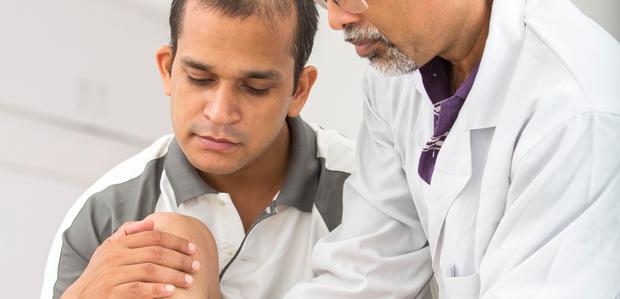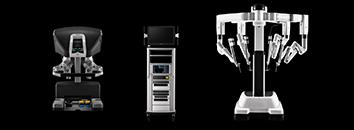Department of Orthopaedics and Joint Replacement

The Department of Orthopaedics and Joint Replacement at Gleneagles Aware Hospital at LB Nagar, Hyderabad offers the best treatment and care for a wide range of Orthopaedics ailments. Known as one of the best hospitals for Orthopaedics in Hyderabad, we have one of the most experienced teams of Orthopaedic Surgeons and specialists. Delivering advanced Orthopaedic Surgery, major complex trauma including Pelvic-acetabular Fracture management, Arthroscopic Knee Surgeries, Paediatric Orthopaedic Surgeries, Spine Surgeries, deformity correction and treatment of bone problems, we remain committed to your freedom of pain-free movement and excellent quality of life.
Our Diagnostic Capabilities for Orthopaedics & Joint Replacements Disorders
Accurate diagnosis is the key to the treatment of orthopaedic ailments, and we at Institute of Orthopaedics and Joint Replacement at Gleneagles Aware Hospital at LB Nagar, Hyderabad, remain committed to both early & accurate diagnosis. Advanced imaging & radiological infrastructure is available at the hospital for timely diagnosis. Specialized infrastructure for orthopaedic ailments, state-of-the-art laboratory infrastructure is also available. Some of the comply deployed diagnostic tools for ascertaining orthopaedic conditions include:
Methods for the diagnosis of Orthopaedic conditions are:
- Arthrography: Arthrography is a specialised X-ray of the joints such as knees, shoulders, elbows, or others. It is routinely performed for accurate assessment of bone injuries and offers greater detail when compared to a normal X-ray. Using a thin needle that injects a contrast dye into the joint to offer greater clarity and thereby aid improved diagnosis.
- Doppler Ultrasound: Doppler Ultrasound deploys high-frequency sound waves to measure the amount of blood flow to the limbs. A non-invasive, pain-free procedure, a Doppler Ultrasound can reveal blocked arteries at an early stat and help an Orthopaedic understand bone or joint ailments caused by lack of adequate blood flow.
- Electromyography: Electromyography (EMG) is a diagnostic procedure that analyses the health condition of muscles. Studying the electrical activity of the skeletal muscles, the test helps doctors understand the condition of the musculoskeletal structure and its underlying ailments.
Why Choose Us for Orthopaedics?
The Department of Orthopaedics and Joint Replacement at Gleneagles Aware Hospital at LB Nagar, Hyderabad delivers excellence in treatment and remains committed to world-class patient experience. Using advanced technology, clinical protocols, and with the help of an expert team of Orthopaedics surgeons we provide advanced treatment and care for a wide range of Orthopaedic ailments.
State-of-the-art technology, infrastructure, and patient-care facilities make us one of the best hospitals for Orthopaedics in Hyderabad. A dedicated team of nurses works round the clock for constant monitoring while a team of Physiotherapists work with the patient for post-surgical recovery & rehabilitation.
Our Doctors – Orthopaedic Surgeon
The department of Orthopaedics and Joint replacement at Gleneagles Aware Hospital, Hyderabad, has a brilliant set of specialists & Orthopaedic doctors in Hyderabad to provide you with great services. We have some of the best Orthopaedic doctors and Orthopaedic Surgeons in Hyderabad who will help the patients with all their problems and make sure that they clear their doubts by giving them expert advice. Our doctors are brilliant in their work and make sure that they take the utmost care of all our patients. We are one of the best hospitals for Orthopaedics in Hyderabad and we provide a very comfortable and safe journey to recovery. Being amongst the best hospitals for Orthopaedic surgeries in Hyderabad, we want our patients to feel safe and know what they are getting into, and our hospital will provide that.
Our Doctors
View all
Dr Ashwin Kumar Reddy
Consultant
MBBS, MS (Ortho)

Dr V V Satyanarayana
Consultant
MBBS, MS (Orthopaedics), MCh Trauma (UK), AO Fellow Trauma & Arthroplasty (Greece)
Orthopaedics Treatment & Procedures Provided at Gleneagles Aware Hospital
- Which hospital is best for orthopaedic?
Gleneagles Aware Hospital at LB Nagar, Hyderabad offers the best treatment and care for a wide range of orthopaedics ailments, we have one of the most experienced teams of orthopaedic surgeons and specialists. Delivering advanced joint replacement surgery, major complex trauma.
FAQ
Why Choose Us
-
PATIENT EXPERIENCE
Your care and comfort are our top priorities. We ensure that the patients are well informed prior to every step we take for their benefit and that their queries are effectively answered.
-
LATEST TECHNOLOGIES
The Gleneagles Hospitals' team stays up to date on the advancements in medical procedures and technologies. Experience the Future Healthcare Technologies now at Gleneagles Hospitals.
-
PROVIDING QUALITY CARE
Strengthening lives through compassionate care, innovative therapies and relentless efforts. It reflects in the DNA of our passionate team of doctors and dedicated clinical staff.










